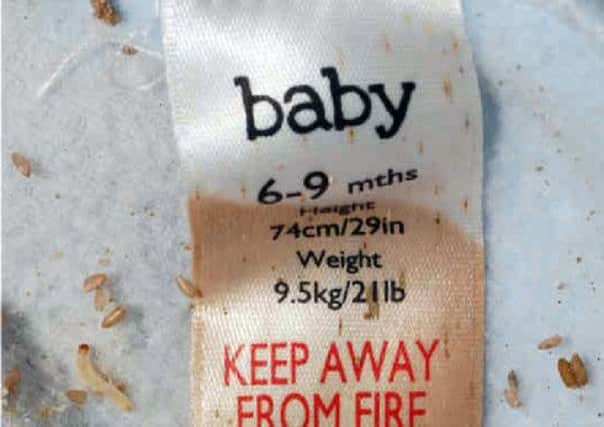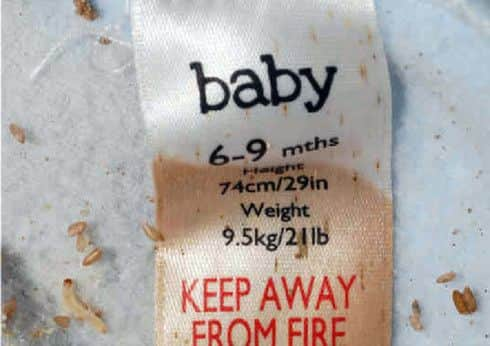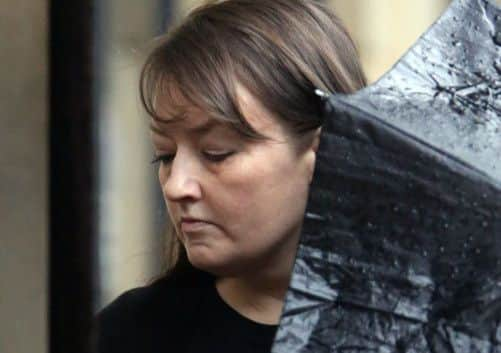Hamzah: How could a child’s death go unnoticed for so long?


As prosecutors asked at the opening of Amanda Hutton’s trial, how can a child starve to death in 21st-century England?
But perhaps the most crucial question prompted by the discovery of Hamzah Khan’s decomposed body is whether anyone could realistically have predicted or prevented the boy’s death.
Advertisement
Hide AdAdvertisement
Hide AdThe jury at Bradford Crown Court might have found Hutton responsible for Hamzah’s death but the role a range of professionals played in the lives of Hutton and her eight children will be closely scrutinised.


Bradford Safeguarding Children Board has conducted a serious case review into the involvement of different agencies with the family but the results will not be published until later this year.
From information already made public, it is clear the family was known to all the main agencies - police, health, schools and social services.
Yet Hutton had a history of failing to co-operate with services that could have helped her.
Advertisement
Hide AdAdvertisement
Hide AdThe jury in her trial heard about a range of visits to her home by different professionals, including police officers, health visitors and a social worker.


But nobody picked up on the danger Hamzah and his five school-age siblings were in.
Many noted no concerns about the children and their living environment, even when they had seen the youngsters.
Hutton’s family was also mentioned at three multi-agency meetings, specifically aimed at pulling together all available information to help high-risk victims of domestic violence.
Advertisement
Hide AdAdvertisement
Hide AdHamzah was born on June 17 2005. He was on the small side at birth but otherwise fit and well and was soon discharged from hospital.


He was seen by a midwife at his home six days later and then by a health visitor on July 7. Neither noted any concerns.
After this, Hutton completely disengaged from the health and care professionals familiar to all parents.
Hutton’s trial heard that there were no medical records on Hamzah from the age of two weeks until he died, aged four and a half.
Advertisement
Hide AdAdvertisement
Hide AdAn experienced paediatrician told the court that Hamzah’s development and general health beyond the age of two was a “blank page”.
When Hamzah was four months old, a health visitor had the door slammed in her face by Hutton. She looked through the letterbox and noted the house was untidy.
Health visitors, who offer a non-compulsory service for parents, repeatedly called at the house but did not get through the door.
And when Hutton failed to register Hamzah’s birth, she was visited by the registrar and was seen to have a “puffed-up” eye injury and to smell of alcohol.
Advertisement
Hide AdAdvertisement
Hide AdHamzah was registered with his local doctors’ surgery in September 2006 - 15 months after his birth - but he was never seen by a GP at the practice.
The surgery eventually took Hamzah off its list in 2009 due a catalogue of missed appointments.
The court heard that this common practice is being examined because “it causes children to sink even further below the radar”.
Hutton was well-known to police in Bradford, but as a victim.
Advertisement
Hide AdAdvertisement
Hide AdThe jury heard that her partner, Aftab Khan, was violent to her over many years, provoking many police call-outs to their home from 1996 onwards.
Police said they were called to incidents on eight occasions in the four and a half years up to 2008 and Hutton was put under the watch of a specialist vulnerable victims unit.
Khan, who is Hamzah’s father, was convicted of battery against Hutton following an incident in December 2008 - a year before his son’s death.
The police classified Hutton at the highest level of risk and the experienced officer looking after her case, Pc Virginia Whittaker, told the jury she even helped Hutton at Khan’s court case, despite having retired by then.
Advertisement
Hide AdAdvertisement
Hide AdPc Whittaker visited Hutton’s home 10 months before Hamzah’s death but did not see Hamzah as his mother said his nappy needed changing and he was upstairs. The officer said the house was tidy and nothing caused her concern.
West Yorkshire Police said they shared information about all their engagements with Hutton with the social services department.
Hutton’s high level of classificiation with the unit led to her case being raised at three multi-agency risk assessment conferences (Maracs) between June 2008 and January 2009.
Maracs are information-sharing meetings for agencies dealing with victims at high risk of serious domestic violence.
Advertisement
Hide AdAdvertisement
Hide AdBut Hamzah was only seen once by a social worker, in November 2006, before the Maracs began, and the one-year-old appeared “well cared for and well dressed”.
When Khan was arrested for the December 2008 attack, he repeatedly asked the interviewing police to go to see Hamzah because he was undernourished.
He also claimed he was going to contact social services.
Khan told the jury trying Hutton that he made that call but there is no record of it.
A senior police officer said Khan’s claims were followed up but nothing was found to be amiss.
Advertisement
Hide AdAdvertisement
Hide AdThe court also heard about a welfare check by Pc Maria Furness eight months before Hamzah’s death.
This was prompted by an incident when some of Hutton’s children were not picked up from school. Teaching assistants took them home and were concerned about the state of the mother and the school contacted police.
But Pc Furness told the jury she found the children, including Hamzah, to be “fed well, clean, healthy-looking and there was an appropriate adult in the address”.
A final key question will be why Hamzah was not missed at school. Three of his siblings were at school, although attendance issues had been flagged up on a number of occasions.
Hamzah would have been six if he had still been alive when his body was found in 2011 - well over the statutory school age.